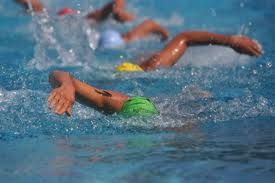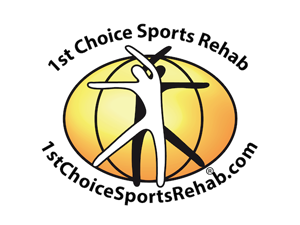Swimming Technique and Injury
Swim Mechanics
Is Your Pain Caused by Poor Technique?
Niklaus A. DelFavero, DC, ART, CSCS, CCSP, CES, CGFI
 It is said that approximately 67% of triathletes consider swimming to be their weakest of the three sports. Even for those athletes who finish at the front of the pack, there is a very good chance that at some point regardless of skill level an injury will occur that will impact their ability to train or perform at optimal levels. I have taken my experience as a competitive swimmer/coach and incorporated my knowledge of anatomy and biomechanics to briefly discuss a few things that may help avoid the common complaint of “shoulder pain” and increase speed in the water.
It is said that approximately 67% of triathletes consider swimming to be their weakest of the three sports. Even for those athletes who finish at the front of the pack, there is a very good chance that at some point regardless of skill level an injury will occur that will impact their ability to train or perform at optimal levels. I have taken my experience as a competitive swimmer/coach and incorporated my knowledge of anatomy and biomechanics to briefly discuss a few things that may help avoid the common complaint of “shoulder pain” and increase speed in the water.
Swimming engages almost every muscle in the body. Due to its repetitive nature, if certain muscles are used incorrectly over time there is a good chance they will eventually fail. The average swimmer may take 16-25 strokes per 25 yards. A small mechanical deviation is no big deal for 200-300 yards, but training 2,000 to 4,000 yards a few times a week may lead to major repetitive trauma to the shoulder musculature.
To simplify the stroke, freestyle can be broken down into three phases, a recovery phase, entry phase and a pull phase. I will briefly describe each phase and discuss common errors in technique that may lead to injury or sub-optimal performance.
The Recovery Phase:
This is the time when the arm returns to the starting position over the head. During this phase the arm should be relaxed as it is brought from the hip to above the head where it will enter the water. This is the time during the stroke that many of the muscles responsible for the pull phase can relax and recover. If the muscles in the arm are rigid and stiff, they will never get a chance to rest and will fatigue much faster than necessary.
The Entry Phase:
During this phase the hand enters the water above the head in preparation for the pull phase. It is extremely important that it enters flat. Many swimmers including elite swimmers will enter thumb first. If the thumb enters first, anatomically the Humerus (the arm bone) will rotate internally, which causes tendons of the rotator cuff, primarily the Supraspinatous tendon, to become compromised. The thumb-first entry during the entry phase may greatly increase the potential to develop rotator cuff syndrome, impingement, bursitis and/or tendonitis.
The Pulling Phase:
During this phase most of the forward propulsion occurs. A common loss of forward propulsion occurs when the elbow bends excessively during the pull and the hand “slips” through the water without driving the body forward. Injuries commonly occur during this phase if the hand has entered thumb first. Not only can thumb-first entry lead to shoulder impingement as mentioned above, but the swimmer will commonly initiate the pulling phase by pulling outwards and away from the body rather than down in front of the body. This will overload the smaller rotator cuff and Deltoid muscles increasing the risk of rotator cuff injuries as well as limiting the maximum potential of the primary pulling muscles resulting in decreased performance.
Symptoms:
There are many presentations but 2 common shoulder symptoms seen with swimmers are recurring focal pain in the front (anterior) of the shoulder and deep cramping pain on the back (posterior) side of the shoulder during the recovery phase. The posterior shoulder pain commonly continues to intensify until the swimmer stops. Both symptoms may be relieved temporarily by swimming backstroke, but pain returns shortly after resuming freestyle. Remember, rest will only temporarily relieve the symptoms.
These are only a few of the most common swimming issues that lead to injury. The off season is a perfect time to have your stroke evaluated. Once identified, these mechanical deviations are fairly easy to correct. In addition to correcting your stroke, strength training and building up proper strength ratios in the shoulder musculature is essential for normal joint function and optimal performance. Swimming does not have to be just a hurdle to get through before the bike and run!
Dr. DelFavero and his colleagues have a long history of successful sports injury treatment. They have two locations, one in Decatur and a new office in Johns Creek, GA. Visit their website: 1stChoiceSportsRehab.com to learn more about 1st Choice or email Dr. DelFavero directly at Dr.DelFavero@1stChoiceSportsRehab.com
Decatur Office
2545 Lawrenceville Hwy
Suite 100
Decatur, GA 30033
404-377-0011
fax 770-939-9353
Johns Creek Office
9810-B Medlock Bridge Rd
Suite 104
Johns Creek, GA 30097
404-300-9931
fax 770-939-9353
